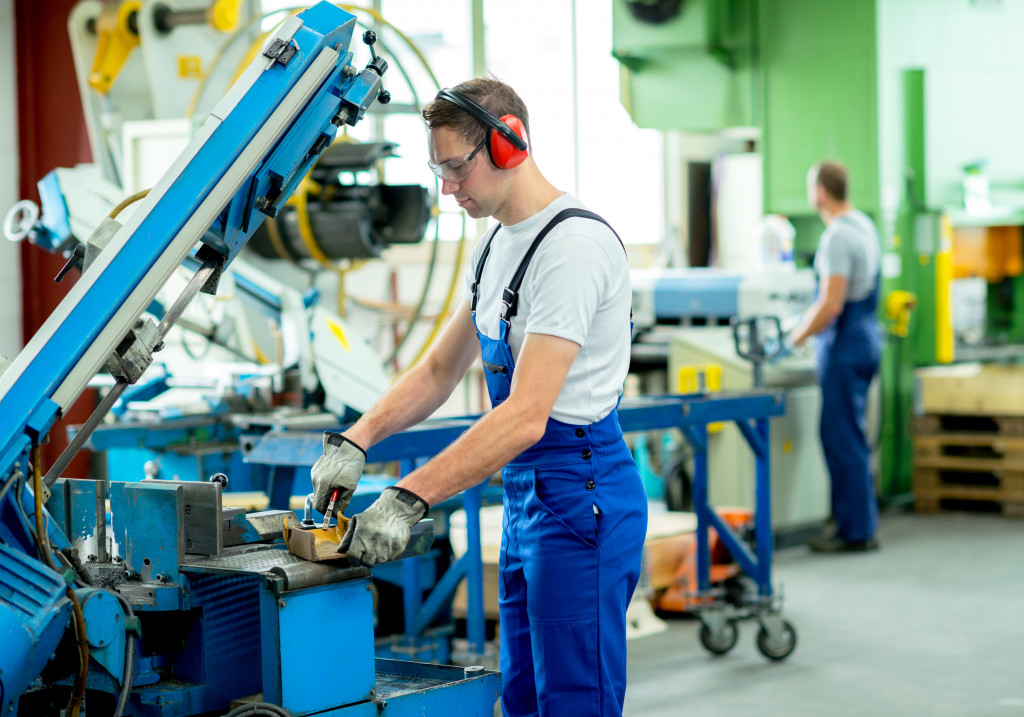- Human error is a common problem in manufacturing businesses and must be addressed to ensure efficiency and safety.
- Comprehensive training is essential to prevent human error and improve efficiency.
- Robotics, such as palletizing robots, can help automate tasks and reduce human error in manufacturing.
- Standard operating procedures (SOPs) should be implemented to ensure consistency and minimize errors.
- Regular audits and inspections can help catch errors early on and identify areas for improvement.
Human error is one of the most common problems that affect manufacturing businesses. Human error can lead to costly mistakes, production delays, and even hazardous situations, whether due to lack of training, carelessness, or other factors.
Fortunately, there are ways to prevent or minimize human error in manufacturing. This blog post will share five tips for reducing human error in manufacturing businesses. It will also discuss the importance of implementing these tips and how they can help your business operate at its best.
Provide Comprehensive Training

One of the main reasons for human error is the lack of proper training. Employees must be trained extensively to understand their roles, responsibilities, manufacturing processes, and safety guidelines.
Training should be ongoing, and refresher courses should be provided periodically. Ensuring that employees are well-trained will make them more confident and less likely to make mistakes. Apart from minimizing human error, comprehensive training programs also promote other advantages, such as:
Improving Efficiency
Trained employees are more efficient as they better understand the processes and equipment involved. This can result in increased productivity and faster turnaround times for orders.
Reducing Manufacturing Costs
With fewer mistakes, there will be a decrease in production delays and waste of resources. This ultimately leads to lower manufacturing costs for your business.
Utilize Robotics
Robotics can be a valuable tool in the manufacturing industry. Robotics can automate repetitive tasks that are prone to human error. They can also help minimize accidents related to heavy lifting or other dangerous tasks.
One of the most useful examples of robotics in manufacturing is the palletizing robot. These robots are designed to stack products onto pallets, making it a time-consuming and labor-intensive task for humans. Implementing palletizing robots can reduce human error and increase efficiency and productivity in your business.
Use Standard Operating Procedures
Standard operating procedures (SOPs) are essential documents that outline the steps required to complete a particular task. SOPs help ensure that all employees meet the same job the same way, every time. They also help minimize errors since lessons are conducted according to specific guidelines. It’s crucial to make SOPs easily accessible to all employees and to review and update them as necessary.
Conduct Regular Audits and Inspections
Regular audits and inspections are a great way to catch errors before they become more significant problems. Audits can be used to identify potential risks and areas for improvement. Reviews can help to ensure that machinery and equipment are safe and functioning correctly. Regular checks on employees’ work can help them identify and correct their mistakes early before they become a problem.
Encourage Communication

Maintain an open line of communication between employees at all levels. Encourage employees to ask questions and speak up if they notice something amiss. This kind of communication creates a sense of awareness and encourages employees to be more alert and proactive.
Also, reporting errors should be seen as an opportunity for improvement and not lead to disciplinary measures. If you find it hard to get your employees to report mistakes, here are a few tips:
Create a Safe Environment
Ensure that your employees feel comfortable reporting their mistakes without fear of repercussions. Foster a culture of learning and continuous improvement rather than punishing for errors.
Provide Feedback and Recognition
When employees report mistakes, provide constructive feedback on how to improve. Also, recognize their efforts in bringing the error to light and taking responsibility for it. This will encourage open communication and build trust between employees and management.
Conduct Regular Team Meetings
Regular team meetings provide a platform for employees to share their thoughts, concerns, and ideas. This can help identify any recurring issues or problems that need to be addressed. It also promotes teamwork and collaboration among employees.
Final Thoughts
Human error in manufacturing can have serious consequences, such as product recalls or accidents. However, there are ways to minimize or prevent human error. Comprehensive training, standard operating procedures, regular audits, communication, and robotics are the key strategies that manufacturing companies can employ to reduce human error. By implementing these tips, manufacturing businesses can improve their productivity, efficiency, and safety.

